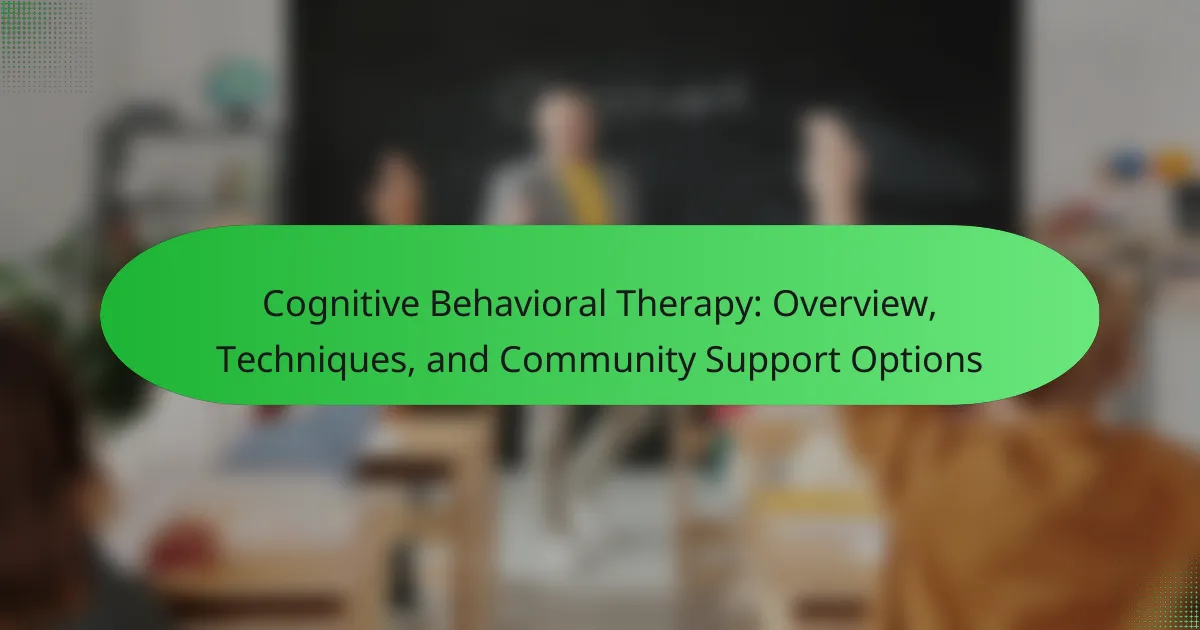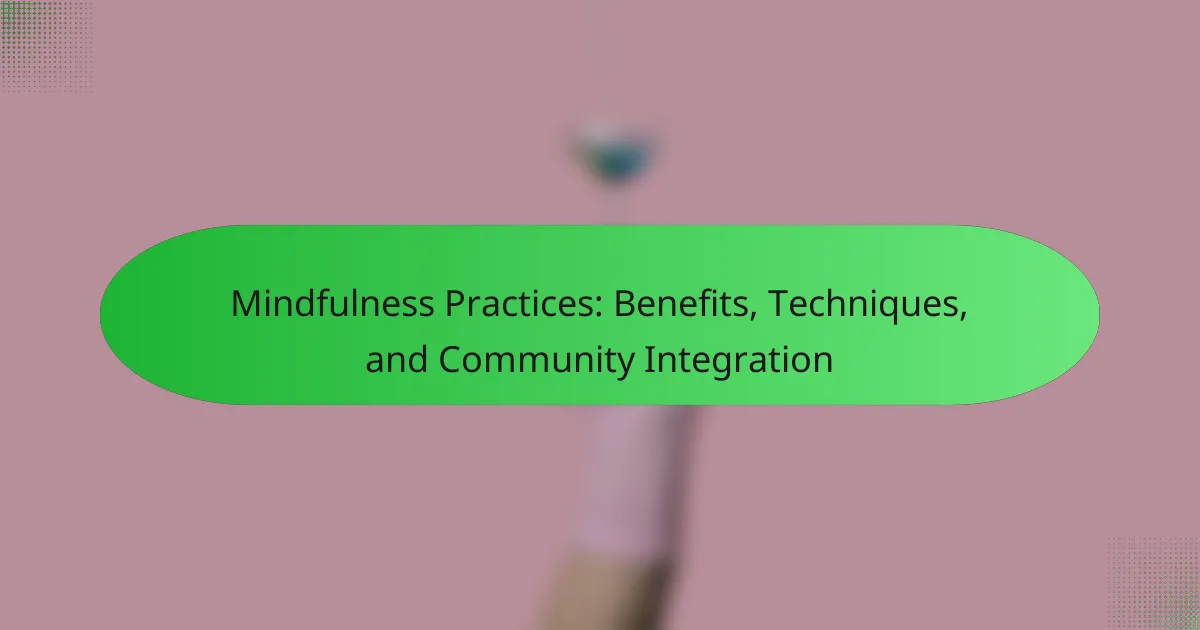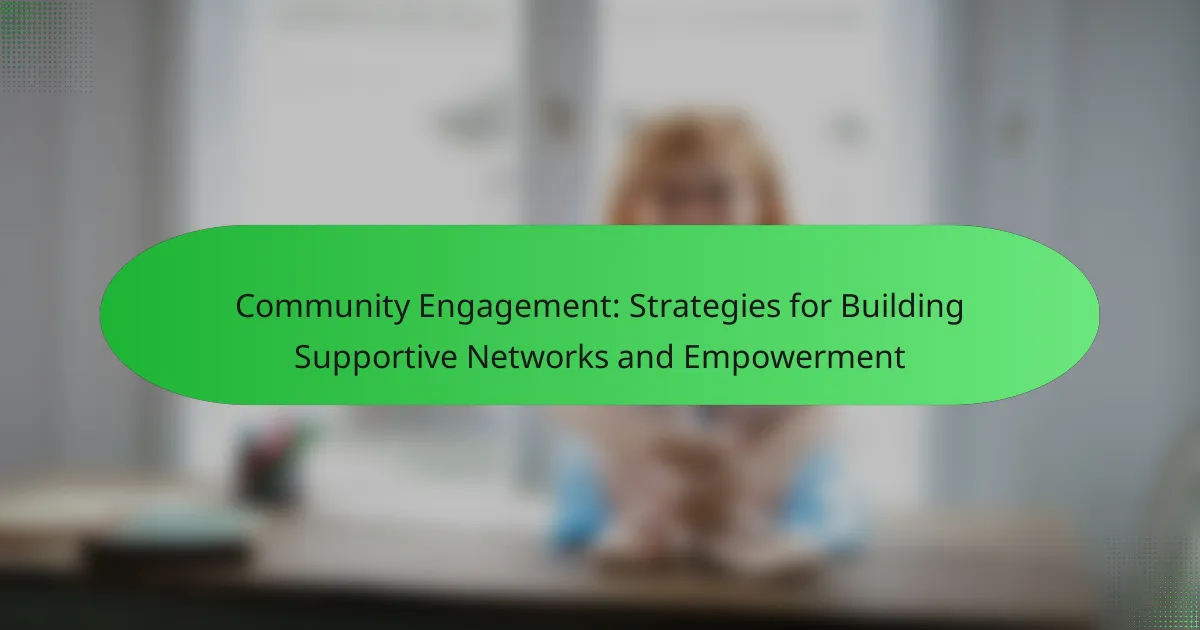Peer support groups offer a powerful avenue for emotional support and personal growth, significantly enhancing mental health outcomes. This article explores their structure, the benefits they provide, cultural variations in their implementation, and the challenges they face. Additionally, it examines innovative approaches that leverage technology for improved accessibility and effectiveness in supporting mental well-being.
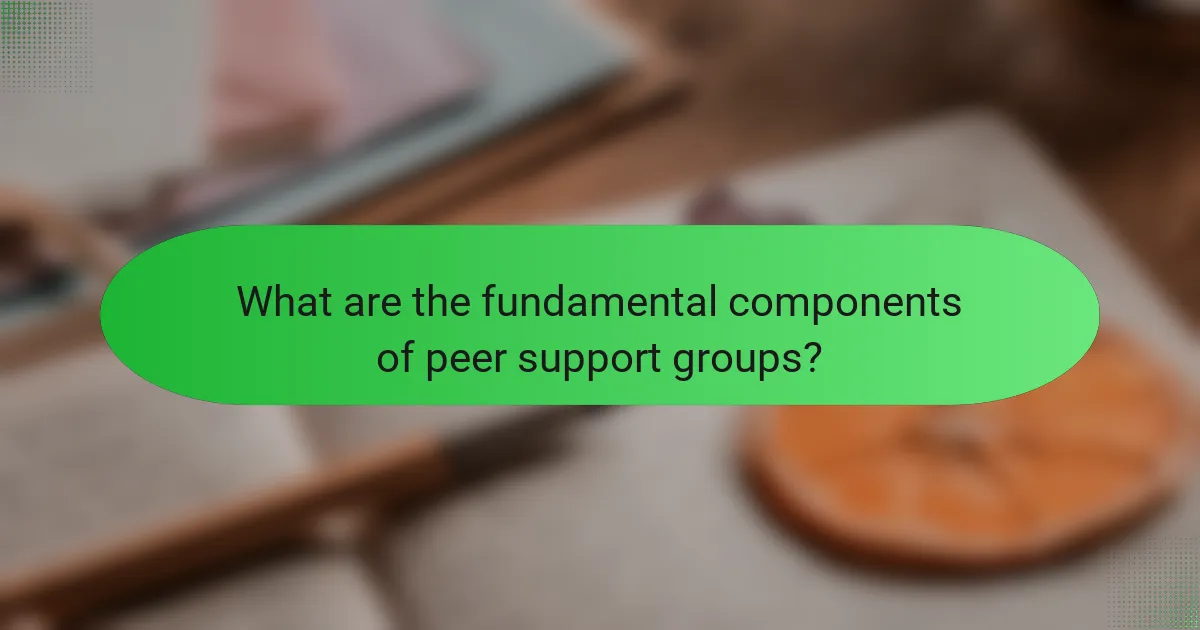
What are the fundamental components of peer support groups?
Peer support groups consist of several fundamental components that enhance their effectiveness. These include shared experiences, mutual respect, and a safe environment for open communication. Participants often find strength in collective understanding, which fosters emotional support and personal growth. Additionally, trained facilitators may guide discussions, ensuring a structured approach while allowing for organic interaction.
How do peer support groups differ from traditional therapy?
Peer support groups emphasize shared experiences, while traditional therapy focuses on professional guidance. Peer support fosters community and personal connection, often leading to increased empathy and understanding among participants. Traditional therapy typically involves structured sessions with licensed professionals who provide clinical insights and techniques for coping. In peer groups, the emphasis is on mutual support, whereas therapy often targets specific mental health challenges through evidence-based methods. Both approaches offer unique benefits, with peer support enhancing social connections and traditional therapy providing expert intervention.
Which roles do facilitators play in peer support groups?
Facilitators in peer support groups play crucial roles in guiding discussions, ensuring a safe environment, and fostering connections among participants. They help maintain focus, encourage participation, and manage group dynamics. Additionally, facilitators provide emotional support and resources, enhancing the overall effectiveness of the group. Their unique ability to create a trusting atmosphere significantly impacts participants’ mental health outcomes.
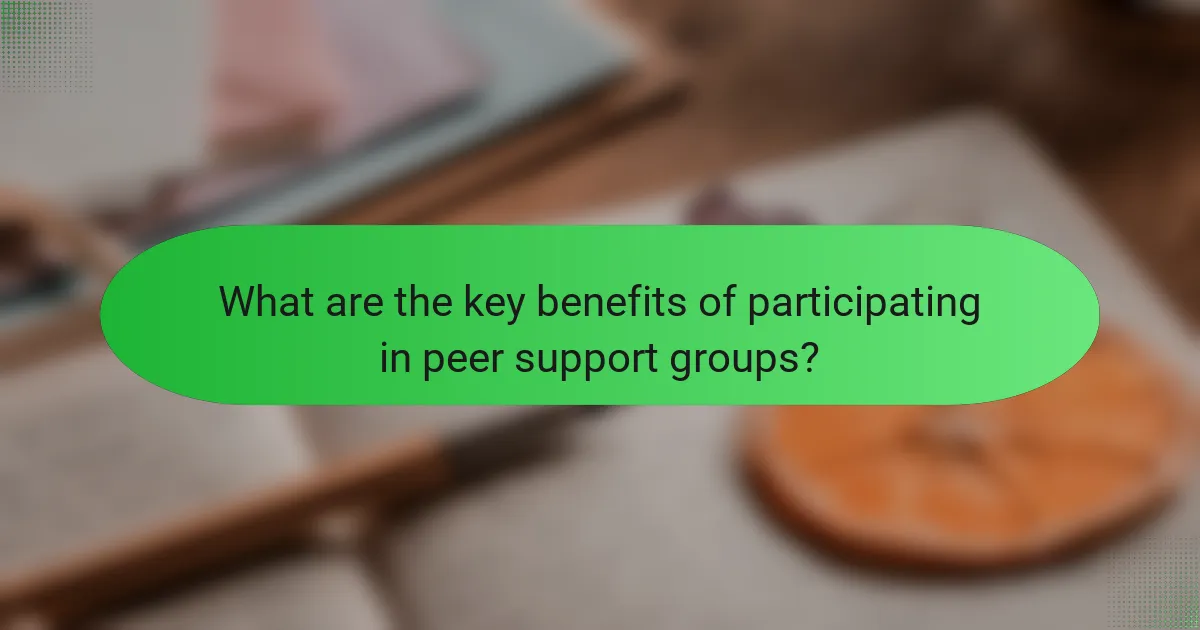
What are the key benefits of participating in peer support groups?
Participating in peer support groups offers emotional support, shared experiences, and a sense of belonging. These groups enhance coping skills and reduce feelings of isolation. Members often experience improved mental health outcomes, including decreased anxiety and depression. Additionally, peer support fosters personal growth through mutual encouragement and accountability.
How do peer support groups enhance emotional well-being?
Peer support groups enhance emotional well-being by providing a safe space for sharing experiences and receiving support. Participants often report increased feelings of belonging, reduced isolation, and improved coping strategies. These groups foster connections that can lead to better mental health outcomes, such as decreased anxiety and depression. Research indicates that 70% of individuals in peer support groups experience significant emotional improvements over time.
Which social connections are fostered through peer support groups?
Peer support groups foster connections such as empathy, shared experiences, and mutual understanding among participants. These connections enhance emotional support, reduce feelings of isolation, and promote a sense of belonging. Participants often form lasting friendships and networks that contribute to improved mental health outcomes.
What impact do peer support groups have on stigma surrounding mental health?
Peer support groups significantly reduce stigma surrounding mental health. They foster open conversations, enabling individuals to share experiences without fear of judgment. This shared understanding promotes acceptance and normalizes mental health challenges. Studies indicate that participants often report lower levels of perceived stigma and increased willingness to seek help. Furthermore, peer support enhances community connections, reinforcing a supportive environment that counters negative stereotypes.
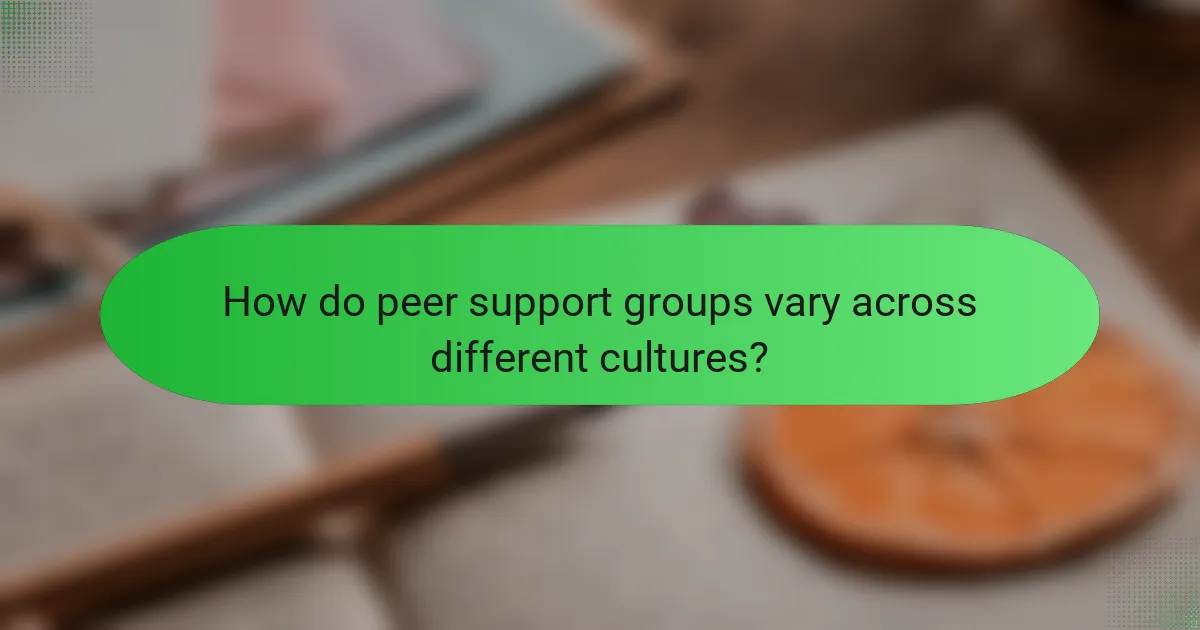
How do peer support groups vary across different cultures?
Peer support groups vary significantly across cultures due to differing social norms, values, and community structures. In collectivist societies, these groups often emphasize communal support and shared experiences, fostering a strong sense of belonging. In contrast, individualistic cultures may focus more on personal empowerment and self-expression within peer support settings.
The structure of peer support groups can also differ; some cultures may prefer formalized groups with trained facilitators, while others may lean toward informal gatherings led by community members. Additionally, the benefits perceived from these groups can vary, with some cultures valuing emotional support more, while others prioritize practical solutions for mental health challenges.
Language and communication styles play a crucial role in shaping the dynamics of peer support groups. For instance, high-context cultures may rely on non-verbal cues and implicit communication, impacting how support is offered and received.
Overall, understanding these cultural variations is essential for effectively implementing peer support groups that resonate with diverse populations and enhance mental health outcomes.
What unique practices are found in European peer support groups?
European peer support groups uniquely emphasize community engagement, shared experiences, and cultural sensitivity. They often incorporate local traditions and practices, enhancing relatability among members. For instance, many groups utilize storytelling as a therapeutic tool, fostering deeper connections. Additionally, there is a strong focus on holistic well-being, integrating mental, emotional, and social health strategies. This approach not only supports individuals but also strengthens community bonds, creating a supportive environment for recovery.
How do peer support groups in Eastern Europe address local mental health challenges?
Peer support groups in Eastern Europe effectively address local mental health challenges by fostering community connections and providing emotional support. These groups offer a safe space for individuals to share experiences, reducing stigma around mental health issues.
They enhance access to mental health resources, often filling gaps in professional services. Participants benefit from shared coping strategies and collective resilience, which can lead to improved mental well-being.
Research indicates that peer support can significantly lower feelings of isolation and anxiety among members. Additionally, these groups often adapt to cultural contexts, making them uniquely effective in addressing specific regional challenges.
Overall, peer support groups serve as a vital resource, promoting mental health awareness and community healing in Eastern Europe.
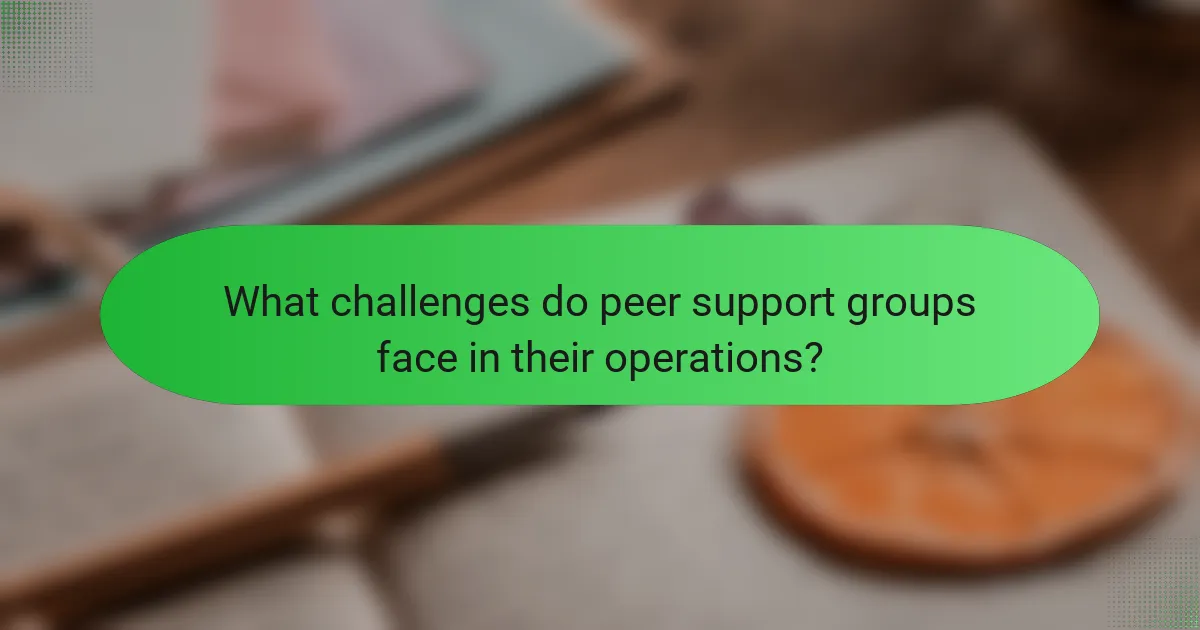
What challenges do peer support groups face in their operations?
Peer support groups face several operational challenges that can hinder their effectiveness. Limited funding restricts resources for training and outreach. Volunteer burnout occurs due to emotional demands and time commitments. Maintaining group cohesion is difficult, especially with diverse member backgrounds. Additionally, navigating confidentiality and trust issues can complicate interactions. Finally, measuring impact and outcomes presents challenges in demonstrating value to stakeholders.
How can peer support groups ensure inclusivity and accessibility?
Peer support groups can ensure inclusivity and accessibility by implementing specific strategies. They should create welcoming environments that embrace diversity and actively seek input from participants. Training facilitators in cultural competence enhances understanding of varied backgrounds. Offering multiple formats, such as in-person, online, and hybrid meetings, accommodates different needs. Providing resources in various languages and ensuring physical spaces are accessible further supports inclusivity. Regular feedback from group members helps identify barriers and improve accessibility measures.
What are common misconceptions about peer support groups?
Many misconceptions exist about peer support groups, often hindering their effectiveness. One common belief is that these groups are only for individuals with severe mental health issues. In reality, they can benefit anyone seeking support. Another misconception is that peer support groups lack structure and professionalism. In fact, many groups are facilitated by trained individuals who guide discussions and ensure a safe environment. Additionally, some people think that sharing personal experiences in these groups is unhelpful or counterproductive. However, sharing can foster connection and understanding, enhancing the overall impact on mental health. Lastly, there is a belief that peer support is a replacement for professional therapy. Instead, it complements therapy by providing additional emotional support and community.
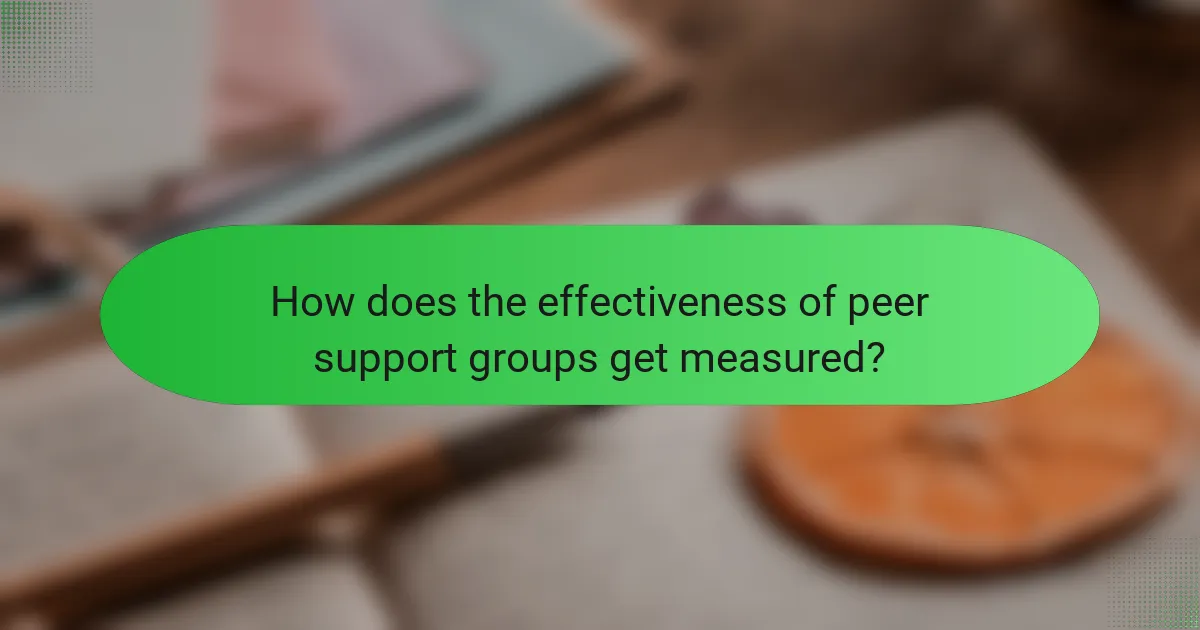
How does the effectiveness of peer support groups get measured?
The effectiveness of peer support groups is measured through various quantitative and qualitative metrics. Common evaluation methods include surveys, participant feedback, and outcome assessments. These tools gauge changes in mental health, social connectedness, and overall well-being. For instance, standardized scales like the Depression Anxiety Stress Scales (DASS) may quantify improvements. Additionally, tracking attendance and engagement levels provides insights into group dynamics and participant commitment. Ultimately, a combination of these metrics helps determine the impact of peer support on mental health outcomes.
Which metrics are used to evaluate the success of peer support groups?
Peer support groups are evaluated using metrics such as participant engagement, satisfaction surveys, and outcomes related to mental health improvement. These metrics provide insights into the effectiveness and impact of the groups on individuals’ well-being.
| Metric | Description |
|—————————-|———————————————————|
| Participant Engagement | Measures attendance and active participation levels. |
| Satisfaction Surveys | Assesses members’ perceived value and experience. |
| Mental Health Outcomes | Evaluates changes in symptoms or overall mental health. |
| Peer Feedback | Gathers insights from members about group dynamics. |
| Retention Rates | Tracks how many participants continue attending. |
| Referral Rates | Indicates how many new members join through existing ones.|
What role does participant feedback play in improving peer support groups?
Participant feedback is crucial for enhancing peer support groups. It informs facilitators about the group’s effectiveness and areas needing improvement. Regular feedback helps tailor sessions to meet participants’ needs, fostering a supportive environment.
Additionally, feedback can highlight unique attributes of effective practices within the group. For instance, specific suggestions may lead to implementing new activities that enhance engagement. This iterative process strengthens the overall impact of peer support on mental health, ensuring relevance and efficacy.
As a result, integrating participant feedback not only boosts satisfaction but also reinforces the group’s role as a valuable mental health resource.
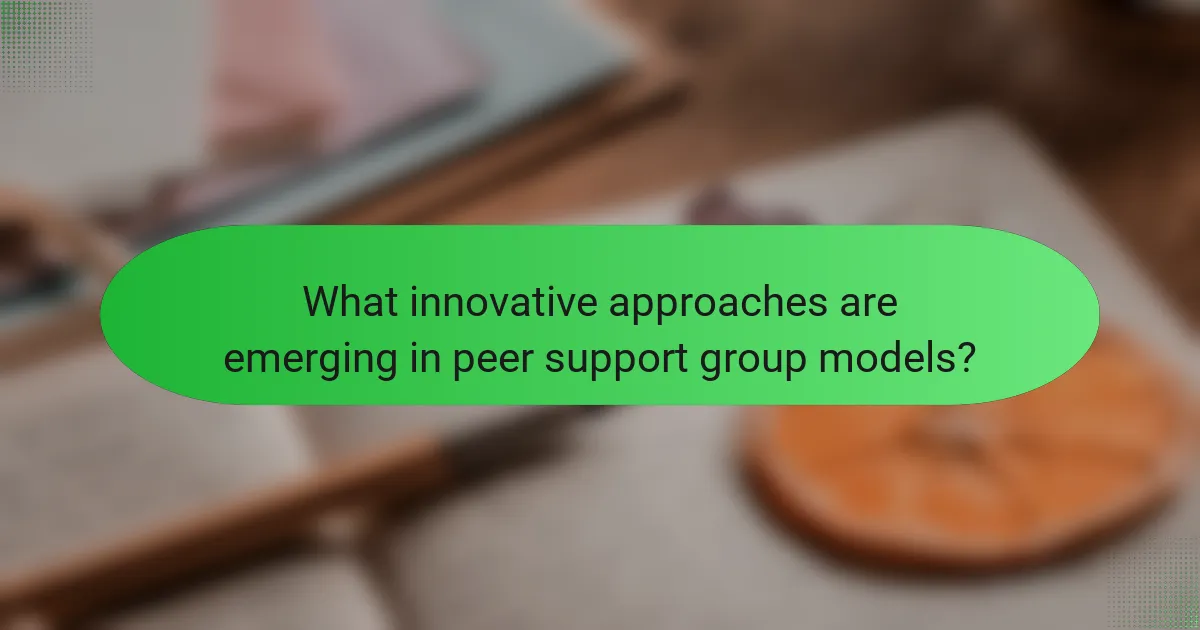
What innovative approaches are emerging in peer support group models?
Innovative approaches in peer support group models include technology integration, such as virtual platforms that enhance accessibility. These models utilize structured frameworks that promote active participation and tailored support. For example, some groups employ trained facilitators to guide discussions, ensuring a safe environment. Additionally, incorporating evidence-based practices can improve outcomes by aligning peer support with therapeutic principles.
How are digital platforms transforming peer support group dynamics?
Digital platforms are enhancing peer support group dynamics by increasing accessibility and fostering connection. Online forums and apps allow individuals to engage from diverse locations, breaking geographical barriers. This transformation enables a wider range of experiences and perspectives to be shared, enriching discussions. Additionally, anonymity offered by digital platforms encourages more open sharing, which can lead to deeper emotional support. The integration of multimedia tools, such as video calls and messaging, enhances interaction, making support more immediate and personal. Overall, these changes significantly improve the effectiveness and reach of peer support groups in mental health contexts.
Which unique initiatives are being implemented in peer support groups worldwide?
Peer support groups worldwide implement unique initiatives that enhance community engagement and mental health support. Examples include online platforms that connect individuals across borders, culturally tailored programs addressing specific community needs, and training for peer leaders to ensure effective support delivery. These initiatives foster inclusivity and adaptability, promoting mental wellness in diverse populations.
What are the best practices for leading a successful peer support group?
To lead a successful peer support group, establish clear guidelines and foster a safe environment. Encourage open communication and active listening among members. Regularly assess group dynamics and address any issues promptly. Facilitate goal-setting and share resources to enhance members’ experiences.

